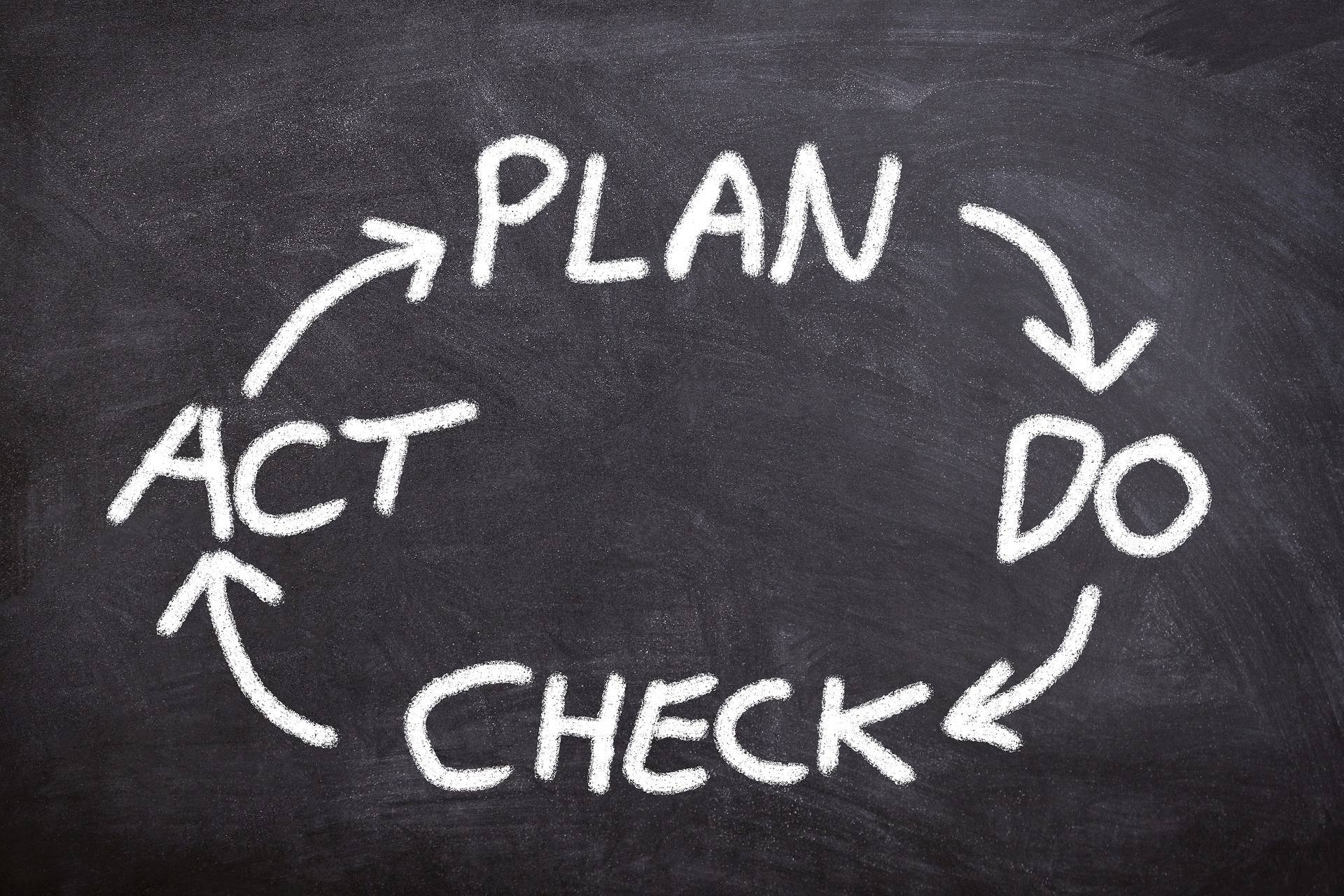
Takeaways of Running PDCA Cycle
PDCA Cycle is the problem solving model which is intended to continuously run over and over again. Here, I would like to introduce takeaways learned by running the PDCA cycle. Please note that this is just from my perspective and interpretation can be different by things people are working on.
What is the PDCA Cycle?
Since the details of the PDCA cycle is written in many websites such as Wikipedia, I just would like to introduce the concept here. PDCA Cycle is the reflective practice model to solve problems which aims to continuously improve the quality or business process. The concept of PDCA is also used in ISO which is an international standard. PDCA Cycle contains 4 stages and PDCA is named after the abbreviation of Plan, Do, Check, Act.
Plan
Plan actions from the current situation.
Do
Execute according to the plan.
Check
Evaluate the gap between result and plan.
Act
Do some action to improve if there is a gap between plan and result after the evaluation. In Wikipedia, it shows that A sometimes stands for “Adjust”. Since this stage is to improve the current process, the term “Adjust” sounds more suitable compared to the term “Act”.
PDCA Cycle is the reflective practice to solve issues by running these 4 stages again and again.
Understanding the real purpose of PDCA Cycle
Then, what is the real purpose of PDCA? The most important thing that PDCA is telling us is that don’t just finish by doing, reflect. And, it tells us that by pursuing reflective practice, there will be learnings and takeaways which can be used for the future.
In order to make the PDCA cycle more effective, it is important to state the expected result at the time to plan the actions. This means there needs to be clear goals stated at the time of plan. Once expected results or clear goals are set in a measurable way, it will be easier to measure the gap at the evaluation stage. The good part about evaluating in the number is that there will be no subjective view at the evaluation which results the same evaluation no matter who evaluated. In other words, if the goal achievement rate is 110%, the goal achievement rate will be 110% no matter who calculates it. In contrast, if there is no measurable goal setting, we will not be able to evaluate the result objectively. And, inability to make appropriate evaluations will lead to inability to create effective improvements. If there are no effective improvements to make, running the PDCA cycle will become ineffective.
In order to run the PDCA cycle effectively, there needs to be clear goals. Then, there needs to be the next clear goal after running a PDCA cycle and making an improvement. Therefore, the key of the PDCA cycle is upto how effective goals we can continuously set after making each improvement.
PDCA cycle example
Since the PDCA cycle is a problem solving model, it can be used at any level. It can be used in annual business plans, and it also can be used in daily activity reports. Everyday, if a person (D) records what the person has done, (C) reflects the gap between expected work and the work done, (A) writes down things to improve, and (P) plans what the person will do the next day, it is just one great PDCA cycle.
Let’s say the person uses the PDCA cycle to improve sales pitch. And, let’s assume there are multiple pitch opportunities every week. Plus, let’s say the person set the goal of 25% success rate for business opportunities to go to the next sales stage such as asking for a quotation. This person will plan to introduce more about product function in the first week (P). Then, just execute the pitch as planned (D). One week later, the person will evaluate the result by checking the rate of business opportunities proceeding to the next sales stage (C). If the rate is not reaching 25%, the person will come up with ideas to improve (A). For example, focus more on introducing testimonials. Once the person decides the plan for the next week, that will be the plan for the next PDCA cycle.
PDCA timeline
If we see PDCA in the letter with the same size, we easily tend to assume the time needed for each stage is the same. However, in reality, most of the time is used for the “Do” part. The key of the PDCA cycle is how effectively we can learn from the gap and use it to improve. This means, it is not wise to spend too much time on planning. Indeed, if it is the first time to do some action, since we don’t know the outcomes, it is difficult to make a plan. However the importance of the PDCA cycle is not to make the accurate plan but to improve by running the cycle. Therefore, it doesn’t matter how far the goal is off from the result at the first plan, as long as there are improvements in accuracy as the one continuously runs the PDCA cycle.
Personally, my “Act” does not include the execution of improvements and only means planning for the improvements. And, those improvement plans will be included in the next action plan. Depending on how people see about “Act”, time on this stage can be longer. Sometimes, there might be specific requirements such as in ISO that the approval of the manager is needed for the plan. The time for each stage also varies in that case.
However in any case, if the time to run the PDCA cycle is shorter, the PDCA cycle will become more effective. This means, it is better to shorten the time to spend for stages which are not “Do”. For example, if there is a PDCA cycle run every week, the ideal PDCA timeline will be 4 days for “Do” and all others are in 1 day.

The most important takeaway of the PDCA cycle is reflective learning
The importance of the PDCA cycle is how many times the person can run in a period of time. This also means, how much improvements the person could have done and how much the person could learn from the results. If the number of PDCA cycles ran increases, there should be more improvements on the business process. This should result in improving productivity. In order to see the improvements on productivity, there should be a measurable goal set at the planning stage. However, to start a new thing, I believe rather than making an accurate plan, having a mindset of learning from the gap between the result and plan is important.


